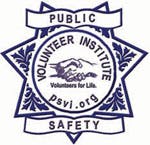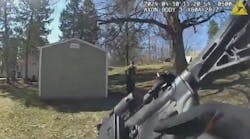Most agencies who utilize Reserve, Auxiliary and Volunteer units lack a healthy budget to support them. With the exception of a small percentage of agencies, hand me down vehicles, two-way radios and less than full uniforms is the norm. However for agencies struggling to better support their dedicated reserves and volunteers, times may be changing with the February 17, 2009 signing of the American Recovery and Reinvestment Act of 2009, aka: the Stimulus Bill.
As part of this historic spending bill, $2 billion in funding allocations have been set aside for over 5,000 local law enforcement agencies, big and small, through the Edward Byrne Justice Assistance Grant (JAG) Program managed by the U.S. Department of Justice, Bureau of Justice Assistance. While the JAG grant program is not new, what is new this is year the greatly increased amount of funding available for our nations police and sheriff's departments.
A quick sample of funding amounts from the 2008 JAG grant program compared to this years will give you a feel for the huge increases, some over 1,000%, in much needed funding to support our nations law enforcement efforts:
- 2008 the City of Los Angeles $1.2 million compared to 2009's $14 million
- 2008 the City of Anaheim, California, home of Disneyland, $54,863 compared to 2009's $723,162
- 2008 Dallas, Texas from $563,766 to 2009's $7,115,022
- 2008 Charlotte, North Carolina $314,211 to 2009's $4,267,393
- 2008 Columbus, Ohio $293,098 to 2009's $4,016,985 (a 1,200% increase)
- 2008 Seattle, Washington $202,184 to 2009's $2,701,067
- New York City 2008 $2,181,680 compared to 2009's JAG allocation of $29,062,259, a full $27 million dollar increase over last years JAG grant allocation
For a full listing of all the 2009 JAG grant allocations and an application package for the funds, see the links at the end of this article.
Now before you go running off to your Chief of Police or Sheriff's office asking for some or all of this money to support your volunteers, reserves, auxiliaries, etc. it’s important to understand at least one thing. The JAG Grant funds that are available, as in past years, once requested, are sent to the manager of the local government, i.e., the Mayor, etc., not directly to the Police or Sheriff's department. Fact of the matter is, the mayor of your town, board of supervisors of your county, etc. could chose to use the JAG grant funds for purposes other than directly supporting their law enforcement agency. JAG grants have six purpose areas that encompass everything from victim services to court operations, crime prevention to drug prevention or treatment. While law enforcement usually gets some, or in some cases all of the money, it's not always the case. Your local elected officials could very well decide that the best way to stop crime is to house all the homeless people on the streets and provide educational programs for all the areas drug addicts to get them into jobs and not pass on a single dime of the JAG grant to your law enforcement agency. Remember the old saying the squeaky wheel gets the grease? Well start squeaking now before it's too late.
Selling your needs to the command staff
As it relates to the use of JAG Grant funds to help support and/or start a volunteer or reserve program in your agency, it's important that you emphasis a few things to the powers to be who control your agencies JAG grant funds. First, yes, these funds can and are being used for the purpose of supporting and/or starting a volunteer program. According to a White House press release touting the many great uses of the 2009 JAG grant funds, (see link to press release below) the state of Vermont's largest police department "is excited about using the Byrne JAG funding to create a number of new positions, to include a Volunteer Coordinator. This new civilian position would free up sworn law enforcement officers to return to regular duties, and it would expand efforts to utilize volunteers to provide a wide array of services to the community."
With that fact established, the next item to focus on is Leverage! Ever try lifting a heavy object on the ground with your bare hands with no luck and then you stuck a long and strong piece of wood under it and it lifted up like magic? That was leverage, pure and simple and the same principal can be applied to law enforcement operations. In a real life example, in April of 2008, a division commander of one the largest police agencies in the nation, in charge of a police station located within one of the most dangerous inner cities, wanted to take as many criminals off the streets Easter eve so the children of this crime ridden area could play safely and the good people of this community could rest at ease with their families for this wonderful holiday. Overtime was approved for a dozen or so full time sworn officers to go out and make as many probable cause contacts with as many people as possible to check for wants and warrants with zero tolerance; anyone wanted went to jail that night. So far so good however how would the station handle a large influx of arrestees in one night without keeping the arresting officers at the station to walk their clients through the system? Answer, call out the reserves.
Utilizing a staff of eight civilian Specialist Reserve Officers and several sworn Reserve Officers, the full time officers left the station with orders to bring in as many wanted suspects as possible. As the night progressed there was a steady stream of clients coming through the back door with warrants ranging from simple misdemeanors up to a wanted violent felon who had escaped from a state prison. The arresting officers made their initial body searches in the field, then wrote up a simple arrest card stating the charges, drove them to the back of the station, walked them in, handed them off and then back into the night they went to clean up the community. Inside the station the Specialist Reserve Officers were broken up into teams to handle everything from the initial contact to securing of personal property, to running the arrestees RAP sheets to handing them off to the team of full time custody officers who were standing by to transport the individuals to the main jail facility.
Meanwhile in the field, a team of Reserve Officers were handling the impounding and waiting on the towing of suspects' vehicles as needed. Throughout the evening, the normal complement of inside station personnel remained the same with no additional overtime needed to support the operation which netted over 50 arrests, allowing all the overtime to be focused where it was most needed, putting additional sworn personnel on the streets to do what they do best. By the end of the night, Operation Crushing Crime was declared a success and the children of this impoverished community could play outside in search of their Easter eggs with little fear of the criminal element that normally wreaks havoc on the community.
While not ever city or county may have the need to conduct as dramatic of a special detail to help protect their citizens, this case does highlight how trained and trusted volunteers can be used as leverage to aid full time officers in making a difference to help reduce crime and bring a little extra peace to our world that lately seems to be going crazy. I would ask that any of you who manage civilian volunteers and/or reserve officers or have them within your department to take a moment and think of special events you could conduct, above and beyond their normal task, to help improve your community. Perhaps you want to help curb drinking and driving with the summer months coming up and need administrative assistance in the field to help at the mobile booking center. Maybe you want to do a sweep of your city to check the status of all your registered sex offenders to make sure their living where they say they are. How about visiting every retail store and company in your community to make sure the emergency contact information you have for them in your CAD/RMS system is up to date in case you need to reach them after hours? The list of possibilities goes on.
To recap, JAG grant funds can and are being used to support volunteer programs within law enforcement agencies but before you make your best case for why your volunteer forces should receive some of those funds, focus on how you can leverage that money to leverage your ongoing efforts with volunteers! One word of caution if I may, the good folks at the U.S. DOJ, Bureau of Justice Assistance in Washington, DC, who help administer the JAG grants are working as hard and as fast as they can to respond to the overwhelming amount of phone calls and questions they have been receiving regarding the 2009 JAG grants. In a normal year their busy but with the increased funding amounts now available, the interest level has skyrocketed so please be patient. A number of these folks are retired or former members of law enforcement who've been where you are and want to help and they will but may need a little extra time to respond to your calls. Best wishes for success and please feel free to share with me at the below e-mail address any of your JAG grant success stories as I'm sure there will be many out there!



